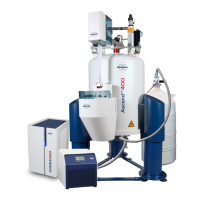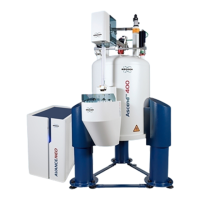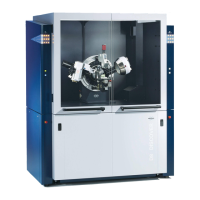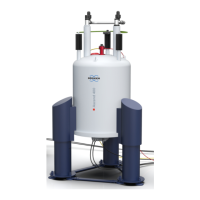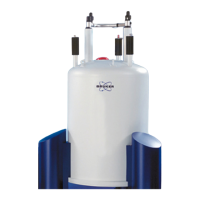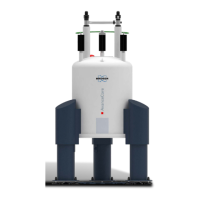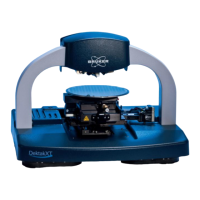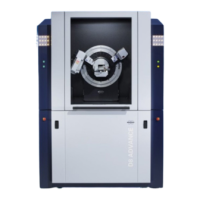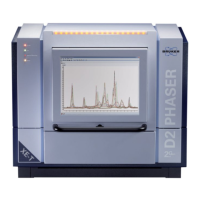CryoProbe and Other Accessories
H157655_1_008 85
10.1 CryoCooling Unit
The CryoCooling Unit is installed adjacent to the magnet outside the 50 Gauss (5 mT) line.
The shim cable must be 180º from the CryoProbe front plate. The shim stack may be rotated
if necessary.
Dimensions: Width: 68 cm
Depth: 89 cm
Height: 96 cm
Weight: 400 kg
Voltage:
Required external fuse
upstream:
230 V AC +/- 10%, 1 phase, 50-60 Hz.
T 10 A (T = time-lag fuse)
Power consumption: Peak 0.8 kW
Average 0.5 kW
(systems produced before June 2005: peak power of
1.5 kW)
Acoustic noise: Maximum 61 dB(A) 2 meters distant
Maximum room ambient
temperature:
30°C. No operation above this temperature is
approved.
Helium gas supply: A high purity helium (He) gas cylinder (6 N = 99.9999%
or better, maximum impurity concentration 1 ppm).
Compressed air or nitrogen
supply:
With a pressure of > or = to 4.5 bar.
Position: Outside 50 Gauss (5 mT) stray field.
Table10.1: CryoCooling Unit Specifications
10.2 Helium Compressors
The next step in the site planning for a CryoProbe accessory involves determining the type
and location of the helium compressor. Since the helium compressor generates a
considerable amount of heat (7.5 kW average, 8.5 kW peak), it must be cooled to prevent
overheating. Bruker offers both water cooled and air cooled helium compressors. In either
case, placing the compressor in a remote room (allowing He gas flex lines up to 20 m to
reach the CryoCooling unit) or an enclosure will keep the noise of the unit out of your
laboratory. Outdoor helium compressors may be sited at increased distances allowing He gas
lines up to 40 m to reach the CryoCooling Unit.
10.2.1 Available Models
Three models of helium compressors are currently available. All the compressors must be
sited outside the 5 Gauss (0.5 mT) line, generate the same amount of heat (7.5 kW average)
and have the same power requirements (3 Phase, 208 V). The correct helium compressor for
your laboratory may be determined based on the desired location for the unit (indoor,
outdoor, and distance from the CryoCooling Unit) and the availability of a chilled water
supply. Helium transfer lines connect the helium compressor to the CryoCooling unit and are
available in several different lengths as shown below.

